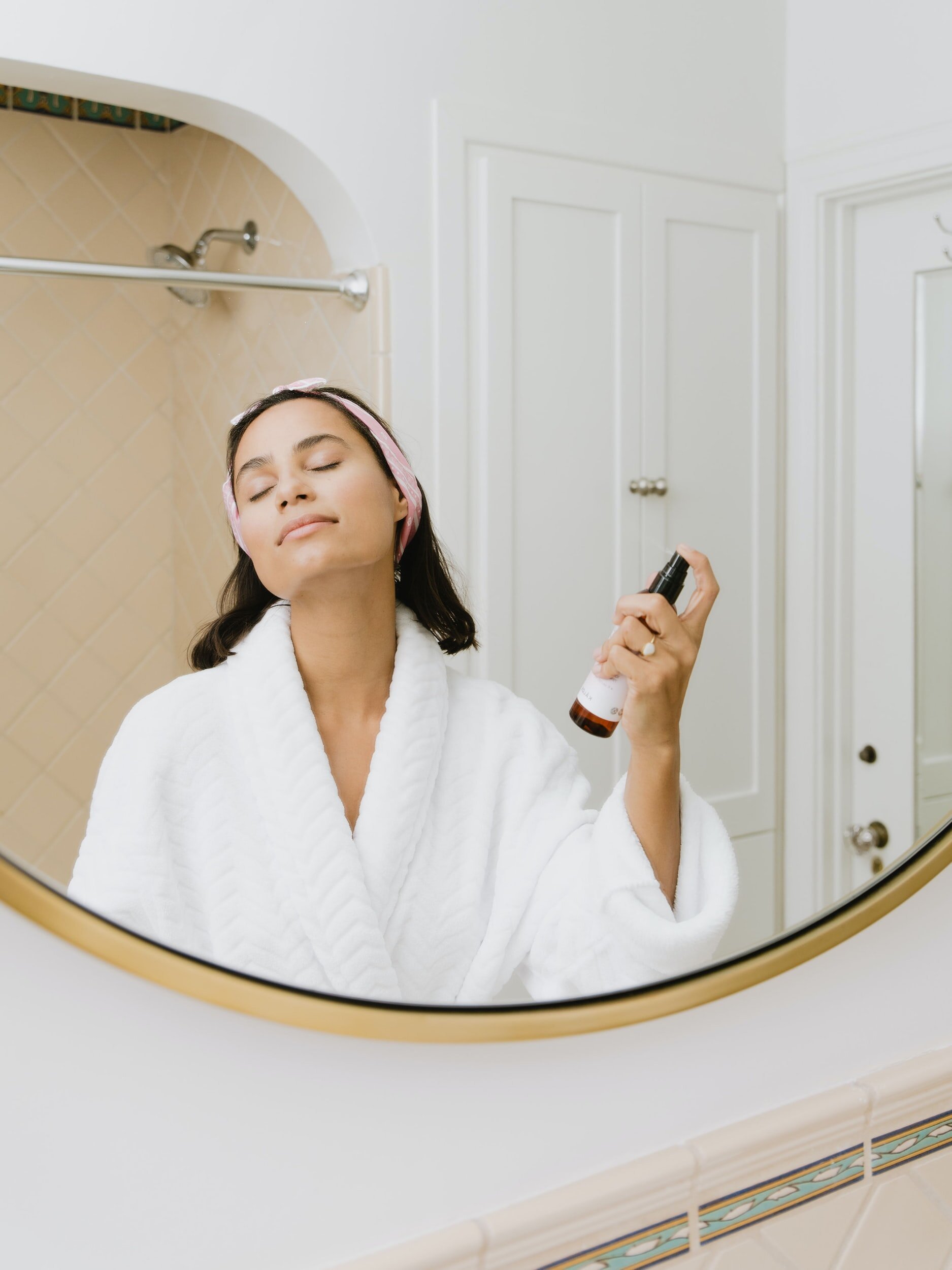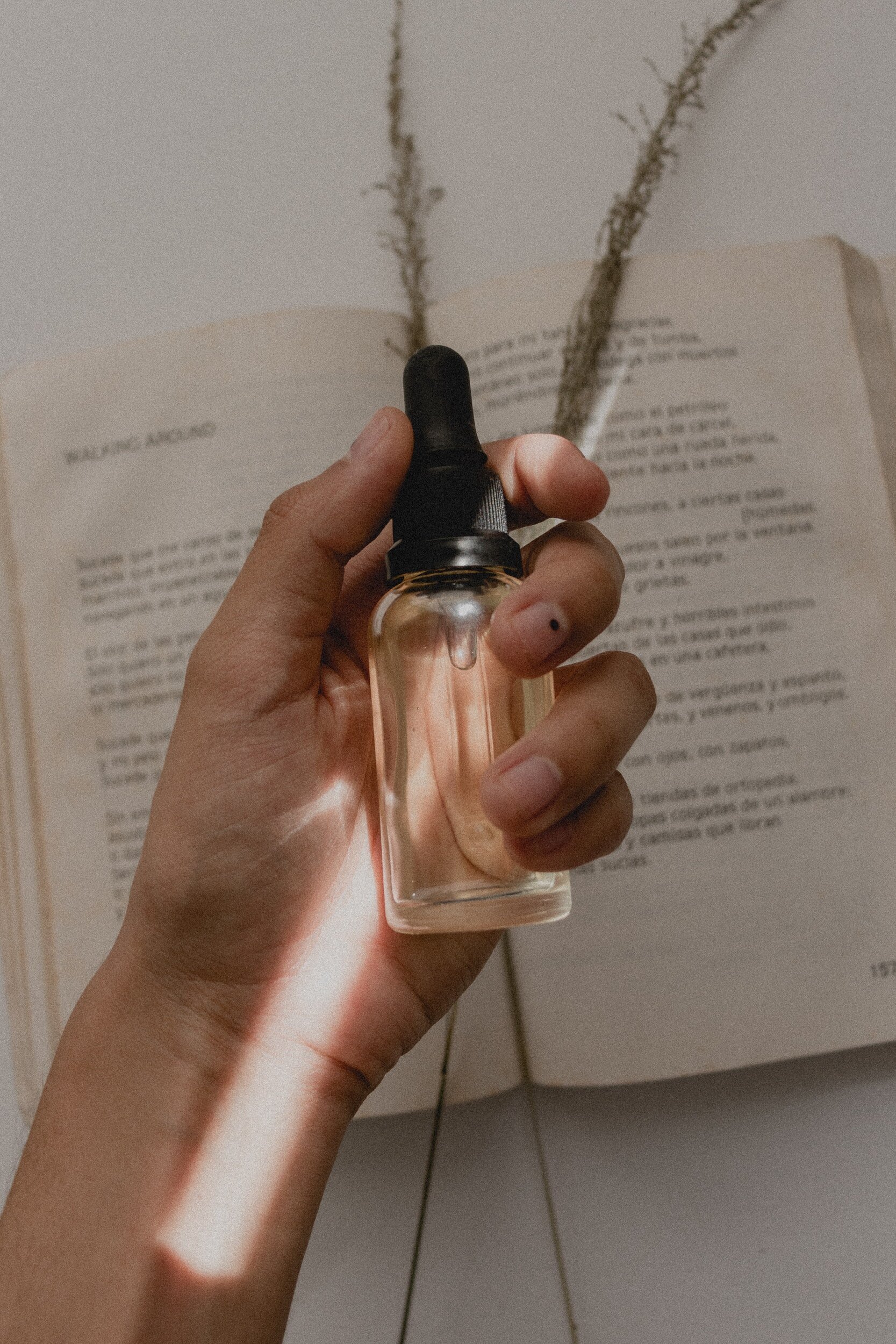What I Know Now: Skincare
I feel like everyone got a little more obsessed with looking after their skin over lockdown. I mean, what better time to cultivate the perfect skin routine? We saw the rise of TikTokers like Skincare By Hyram and countless other guru’s come out the woodwork to preach the magical powers of retinol.
Personally, my skin has always felt like a minefield. I never really had acne until my A-levels, the stress of revising day in and out caused my skin to look like a connect the dots map. After convincing my doctor that it wasn’t the layers and layers of makeup that had caused it, I was quickly put on medication to clear it away. But I’ve always struggled to find the perfect routine to stop break outs and make sure my skin isn’t as dry like a cornflake.
But after working with some skincare clients the past few months, I feel a bit more well-versed in the world of skincare. I know the key ingredients my skin needs and I know how often they need to be applied etc. Each person definitely has their own set of needs when it comes to skincare, but the process of finding the perfect routine is an easy one to follow.
Here’s my tips for starting the perfect skincare routine:
Before determining what to include in your skincare routine, it’s important to know your skin type and if you have any major concerns you want to address. It’s also good to remember that everyone’s routine will differ - what works for you might not be the best for your friends/ family.
Figuring out your skin type is easy, how does your skin act without any makeup on a few hours after taking a shower. If it gets greasy you have oily skin. If it’s dry of flaky…you have oily skin. If its both in different areas then you have combination skin. I’m combination, but I definitely don’t drink enough water which means my skin is severely de-hydrated. Knowing your skin type will help steer you toward products that can manage your skin and help take care of additional concerns.
Skin care doesn’t have to be complicated if you don’t want it to be. The three basic steps of a skin-care routine are cleansing, moisturising, and applying sunscreen (at least SPF 30 and broad spectrum). You should cleanse then moisturize every morning and night. You should also apply sunscreen every morning, but you can use a moisturizer that has at least 30 SPF and broad-spectrum protection to combine those two steps. You can use a daytime moisturizer with SPF at night too, although you may find that a thicker product is more moisturizing and better suited to nighttime use because you don’t need to worry about being able to put makeup over it—plus, you don’t need to worry about SPF while you’re sleeping.
If you wear heavy makeup or sunscreen during the day, you may find that your cleanser doesn’t get all your makeup off or still leaves you feeling kind of greasy. In that case, you might benefit from double cleansing, a process in which you wash first with an oil-based cleanser followed by a water-based cleanser or micellar water on a cotton pad to remove anything left behind. But double cleansing is not a requirement.
Serums, toners, exfoliants, and prescription treatments should be applied after cleansing but before moisturizing.
How do I know what’s right for my skin? Well, that depends on the issues you want to cover…
Signs of aging
Some common signs of aging include photodamage dark spots, fine lines, wrinkles, and sagging skin.
Retinoids
These compounds—retinol, retinal (or retinaldehyde), retinoic acid, and synthetic retinoids like Adapalene and Tazerac—are one of only two proven ways to prevent the signs of aging. (The other is sunscreen!) Retinoids, which are forms of vitamin A, work by stimulating the skin-cell-shedding process from below, leading to smoother skin and a reduction in both signs of aging and acne. These come in both prescription and over-the-counter products, so if you aren’t satisfied with the results of an over-the-counter option, check with a dermatologist about getting a prescription version. Retinoids are also notorious for causing irritation when you first start using them, so it’s crucial to apply them just a few days a week to start with and to apply a moisturizer right after using them.
Sunscreen
You’ve likely used a sunscreen before to prevent sunburns, which are one form of U.V. damage. But did you know that U.V. rays can also contribute to other kinds of damage? And that damage can cause dark spots, wrinkles, and other signs of aging? It’s true. Preventing that—and skin cancer, of course—is a major reason to use sunscreen every single day. Be sure to use a sunscreen that’s at least SPF 30 and provides broad-spectrum protection, meaning it protects against both UVA and UVB rays. Although the sunscreen in your makeup doesn’t count as your daily SPF, the sunscreen in your moisturizer can—as long as you use it on your ears and neck as well as your face.
Niacinamide
This is a form of vitamin B3 (niacin) that can be applied to the skin. There is some research to suggest that it can be helpful for managing acne, rosacea, and signs of aging including hyperpigmentation, fine lines, and wrinkles.
Ceramides
Ceramides are intercellular lipids, meaning they fill in the spaces between your skin cells in the stratum corneum (the outer protective layer of skin). Your skin already makes ceramides on its own—without them, your skin won’t be able to effectively hold moisture in or keep irritants out. Topical ceramides may be present in both prescription treatments for eczema and over-the-counter products.
Vitamin C
Yes, that vitamin C! This vitamin is essential for producing collagen and other important compounds in the body. And when it’s applied topically it can function as an antioxidant, thus preventing U.V.-related damage. It can also inhibit the production of melanin (pigment) in the skin, making it a good option for lightening dark spots due to photoaging or other kinds of damage. But beware that all forms of vitamin C are not created equal—some are more or less effective or stable than others. Vitamin C often appears on the label as these derivatives—look for ingredients such as magnesium ascorbyl phosphate, ascorbyl 6-palmitate, ascorbic acid sulfate, or L-ascorbic acid (also referred to simply as ascorbic acid).
Peptides
Peptides are known as the building blocks of proteins. They’re made up of short chains of amino acids. In the realm of skin-care, we mostly talk about peptides as building up collagen, a protein your skin needs to keep its structure. Different types of peptides might do the job of bolstering your collagen in different ways, but the most common ones are signaling peptides, which can both stimulate the skin’s collagen production and slow down the natural breakdown of collagen.
Acne
Although it’s very common, acne is a lot more complicated than most of us realize. For instance, there are different types of pimples (whiteheads, blackheads, et cetera), which may be inflamed (red, swollen, painful) or not. Acne can also be influenced by many factors in your life, such as your hormones. So if your acne is severe or if your over-the-counter treatment options aren’t helping, it’s important to see a dermatologist who may be able to prescribe you something more effective.
A note on fungal acne:Fungal acne is a colloquial term for a type of yeast infection that inflames the hair follicles on your skin. The actual name for this condition is either pityrosporum folliculitis or malassezia folliculitis, depending on whom you’re talking to. It causes red bumps and pustules that might look like acne, but don’t usually affect the face. Unlike actual acne, so-called fungal acne is treated with antifungal medications. So if you’re not sure what type of bumps you’re dealing with or your usual acne treatments don’t seem to be helping, talk to a dermatologist to see if you might be dealing with a fungal issue instead.
Ingredients
Retinoids (see above)
Chemical exfoliants
You may already be familiar with physical exfoliants such as scrubs and brushes. And while those are perfectly effective at removing dead skin that can clog pores, they’re not exactly gentle. That’s why many dermatologists recommend their patients stick with chemical exfoliants, which include both alpha hydroxy acids, or AHAs (such as lactic acid and glycolic acid), and beta hydroxy acids, or BHAs (essentially just salicylic acid). Rather than physically scrubbing the dead skin cells off your face, these break down the bonds between those cells so that you can easily wipe them away. They’re present in all kinds of products, including cleansers, toners, masks, and serums.
Benzoyl peroxide
Unlike salicylic acid, benzoyl peroxide can kill the type of bacteria that’s often responsible for inflamed acne. That’s why it’s often recommended to use both benzoyl peroxide and salicylic acid to help manage mild to moderate acne. For more severe acne, a retinoid or other prescription treatment may be necessary. Both salicylic acid and benzoyl peroxide can also irritate or dry out skin, so it’s important to also use a moisturizer when you’re using these ingredients.
Niacinamide (see above)
Azelaic acid
A type of acid synthesized by yeast, barley, and wheat that’s believed to have a gentle exfoliating effect. Research has shown that it’s effective at managing both acne and acne-like bumps that are a common symptom of rosacea. It comes in prescription and over-the-counter forms.



